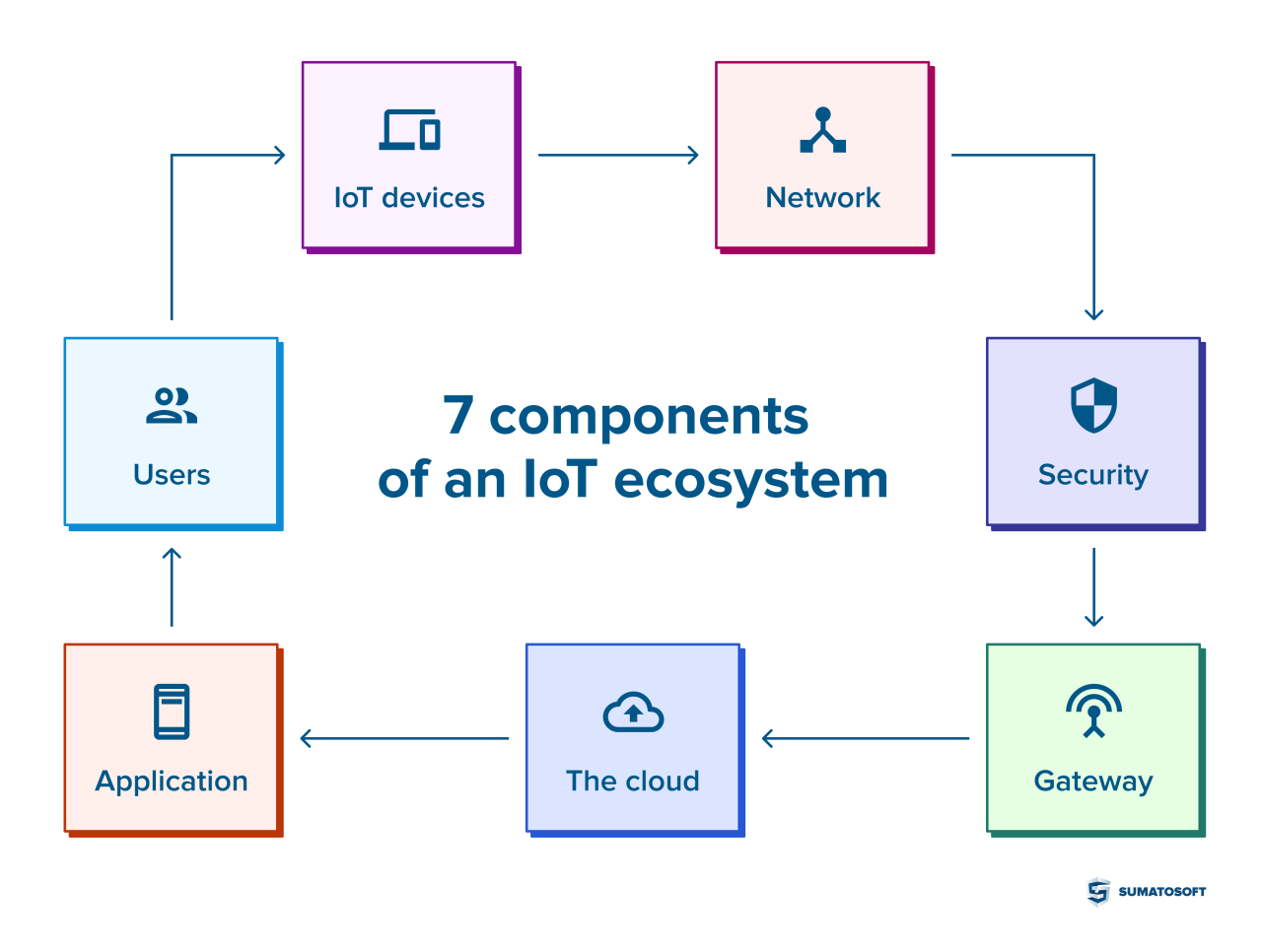Diving into the realm of Technology Integration in Remote Working Ecosystems, this introduction sets the stage for a captivating exploration of how technology shapes the landscape of remote work environments.

It sheds light on the crucial role of integrating technology in optimizing productivity, fostering collaboration, and overcoming challenges in remote work setups.
Importance of Technology Integration in Remote Working Ecosystems
In today's digital age, technology integration plays a crucial role in enhancing productivity and efficiency within remote working ecosystems. By leveraging the right tools and platforms, remote teams can collaborate seamlessly and communicate effectively regardless of physical distance.
Enhanced Productivity through Technology Integration
- Automation of repetitive tasks using project management tools like Trello or Asana.
- Real-time communication through platforms such as Slack or Microsoft Teams, reducing delays in decision-making.
- Cloud-based storage solutions like Google Drive or Dropbox ensure easy access to files and documents from anywhere.
Key Technologies for Seamless Remote Work Operations
- Video conferencing tools like Zoom or Skype facilitate face-to-face meetings and discussions.
- Collaboration tools such as Google Workspace or Microsoft 365 enable real-time editing and sharing of documents.
- Virtual private networks (VPNs) ensure secure access to company networks and data.
Impact on Collaboration and Communication
- Improved team collaboration through shared virtual workspaces and project management tools.
- Enhanced communication flow with instant messaging, video calls, and email integration.
- Increased transparency and visibility into team progress and tasks through digital dashboards and reporting tools.
Challenges of Implementing Technology in Remote Work Settings
Implementing technology in remote work settings comes with its own set of challenges that organizations need to address in order to ensure smooth operations and data security. These challenges include connectivity issues, cybersecurity risks, and resistance to change among employees.
Connectivity Challenges
One of the main challenges faced when integrating technology in remote work setups is ensuring a stable and reliable internet connection for employees. Poor connectivity can lead to disruptions in communication, delays in project delivery, and decreased productivity. Additionally, not all remote employees may have access to high-speed internet, which can further exacerbate this challenge.
Cybersecurity Risks
Integrating technology in remote working environments opens up the organization to potential cybersecurity risks such as data breaches, phishing attacks, and malware threats. Remote employees may unknowingly compromise sensitive data through unsecured networks or devices, putting the entire organization at risk.
It is crucial for companies to implement robust security measures and provide cybersecurity training to remote workers to mitigate these risks.
Resistance to Change
Employees may resist the adoption of new technologies in remote work ecosystems due to fear of change, lack of technical skills, or concerns about job security. Overcoming this resistance requires effective communication, training programs, and demonstrating the benefits of technology integration in improving efficiency and collaboration.
Organizations need to create a culture that embraces innovation and continuous learning to encourage employees to adapt to new technologies
.
Best Practices for Effective Technology Integration
In order to ensure a seamless integration of technology tools for remote work, it is crucial to follow certain best practices that can enhance productivity and collaboration within a remote working ecosystem.
Choosing the Right Platform for Remote Collaboration
When selecting a platform for remote collaboration, it is essential to consider the specific needs of your team and the nature of the work being done. Some popular platforms like Microsoft Teams, Slack, and Zoom offer different features and functionalities that cater to diverse work scenarios.
For instance, Microsoft Teams is ideal for organizations that heavily rely on Microsoft Office tools, while Slack is known for its user-friendly interface and quick communication features. Zoom, on the other hand, is widely used for video conferencing and virtual meetings.
Assess the requirements of your team and choose a platform that best suits your remote work setup.
Training Employees for Effective Technology Utilization
Providing proper training to employees on how to effectively use integrated technologies is crucial for maximizing the benefits of remote work setups. Conduct regular training sessions to familiarize employees with the features and functionalities of the chosen platforms. Encourage them to explore different tools and experiment with various collaboration methods.
Additionally, offer ongoing support and resources to help employees troubleshoot any technical issues they may encounter while working remotely. By investing in employee training, you can ensure that your team is equipped to leverage technology for enhanced productivity and seamless remote collaboration.
Future Trends in Technology Integration for Remote Working
In the ever-evolving landscape of remote work, technology plays a crucial role in shaping the way we work and collaborate. As we look towards the future, it is essential to explore the emerging technologies that are reshaping remote work ecosystems and predict how technology integration might evolve to support the changing dynamics of remote work.
Impact of Artificial Intelligence and Automation
Artificial intelligence (AI) and automation are revolutionizing remote work practices by streamlining tasks, improving efficiency, and enabling greater flexibility. AI-powered tools can automate repetitive tasks, analyze data faster, and provide valuable insights to remote workers. This technology integration not only enhances productivity but also allows employees to focus on more strategic and creative aspects of their work.
Integration of Virtual Reality and Augmented Reality
Virtual Reality (VR) and Augmented Reality (AR) are gaining traction in remote work settings, offering immersive experiences for collaboration, training, and meetings. By integrating VR and AR technologies, remote workers can engage in virtual environments, simulate real-life scenarios, and interact with colleagues in a more natural and interactive way.
This trend is expected to enhance communication, foster creativity, and improve the overall remote work experience.
Enhanced Cybersecurity Measures
With the increasing reliance on digital tools and online platforms for remote work, cybersecurity has become a top priority for organizations. Future trends in technology integration for remote working will focus on implementing advanced cybersecurity measures to protect sensitive data, prevent cyber threats, and ensure secure communication channels.
From multi-factor authentication to encryption protocols, these technologies will play a vital role in safeguarding remote work environments.
IoT and Smart Devices in Remote Work
The Internet of Things (IoT) and smart devices are transforming the way remote workers interact with their surroundings and access information. By integrating IoT devices such as smart sensors, wearable technology, and smart assistants, remote workers can automate tasks, monitor their work environment, and enhance productivity.
These technologies will continue to evolve, providing seamless connectivity and personalized experiences for remote employees.
End of Discussion
In conclusion, Technology Integration in Remote Working Ecosystems proves to be a game-changer in the way we perceive and engage with remote work. As technology continues to evolve, its seamless integration will undoubtedly play a pivotal role in shaping the future of remote work dynamics.
General Inquiries
What are the key technologies essential for remote work operations?
Some key technologies include cloud computing, video conferencing tools, project management software, and cybersecurity solutions.
How can organizations overcome technology adoption barriers in remote work ecosystems?
Organizations can overcome adoption barriers by providing comprehensive training, promoting a culture of digital literacy, and investing in user-friendly technology solutions.
What are some emerging technologies reshaping remote work ecosystems?
Emerging technologies such as virtual reality, artificial intelligence, and IoT devices are reshaping the way remote work is conducted.
 It sheds light on the crucial role of integrating technology in optimizing productivity, fostering collaboration, and overcoming challenges in remote work setups.
It sheds light on the crucial role of integrating technology in optimizing productivity, fostering collaboration, and overcoming challenges in remote work setups.











